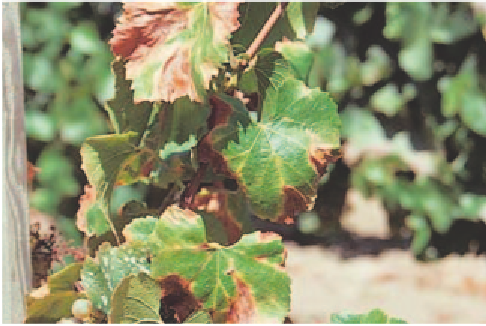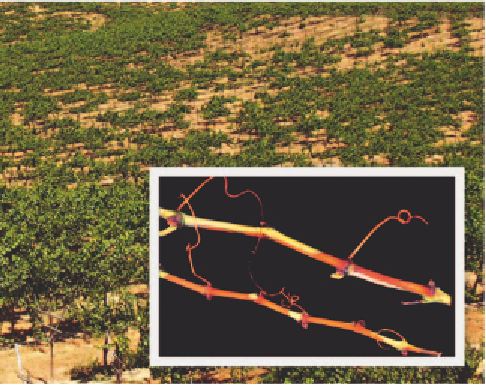Agriculture Reference
In-Depth Information
Importance
The disease is widespread, occurring in most grape-
growing areas of Australia but is more prevalent in
the warmer, inland regions where disease incidence averages
around 10% of vines but varies from zero to 50% or more.
Crop loss varies with the incidence, often reducing yields by
less than 5% but sometimes by as much as 60%. The white
varieties Chardonnay, Riesling and Traminer, are most
susceptible but red varieties are rarely affected.
Management
While there is no commercial control for AGY,
removing badly diseased arms and training adjacent
healthy shoots to replace them has reduced loss.
Investigations to determine a better management
strategy rely on finding the specific leaf hopper that
transmits AGY.
PIERCE'S DISEASE - BIOSECURITY THREAT
Refer to the chapter on Common diseases of perennial
fruit crops (
Xyella fastidiosa
).
What to do if you suspect Pierce's disease
This pathogen is a biosecurity risk to Australia. Any
suspected affected plants should be reported to the
nearest Department of Primary Industries or the Plant
Health Australia hotline (1800 084 881).
Fig 9.3 Pierce's disease showing scorched leaf symptoms on
chardonnay grapes.
Fig 9.5 Pierce's disease showing scorched leaf symptoms.
Fig 9.6 Vineyard infected with Pierce's disease showing areas of lost
vines. Inset: symptoms on a vine cane.
Fig 9.4 Pierce's disease showing scorched leaf symptoms on
merlot variety.














